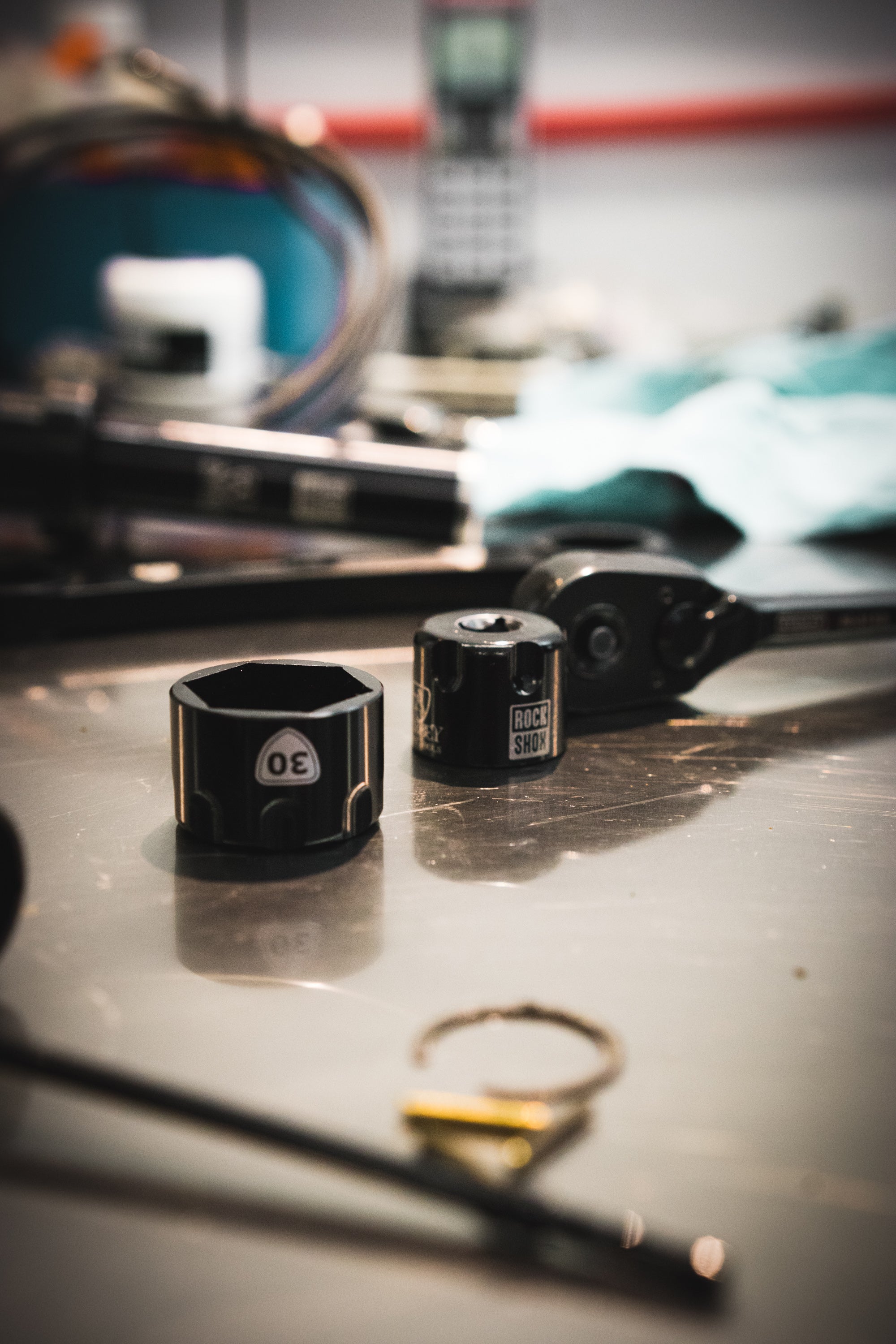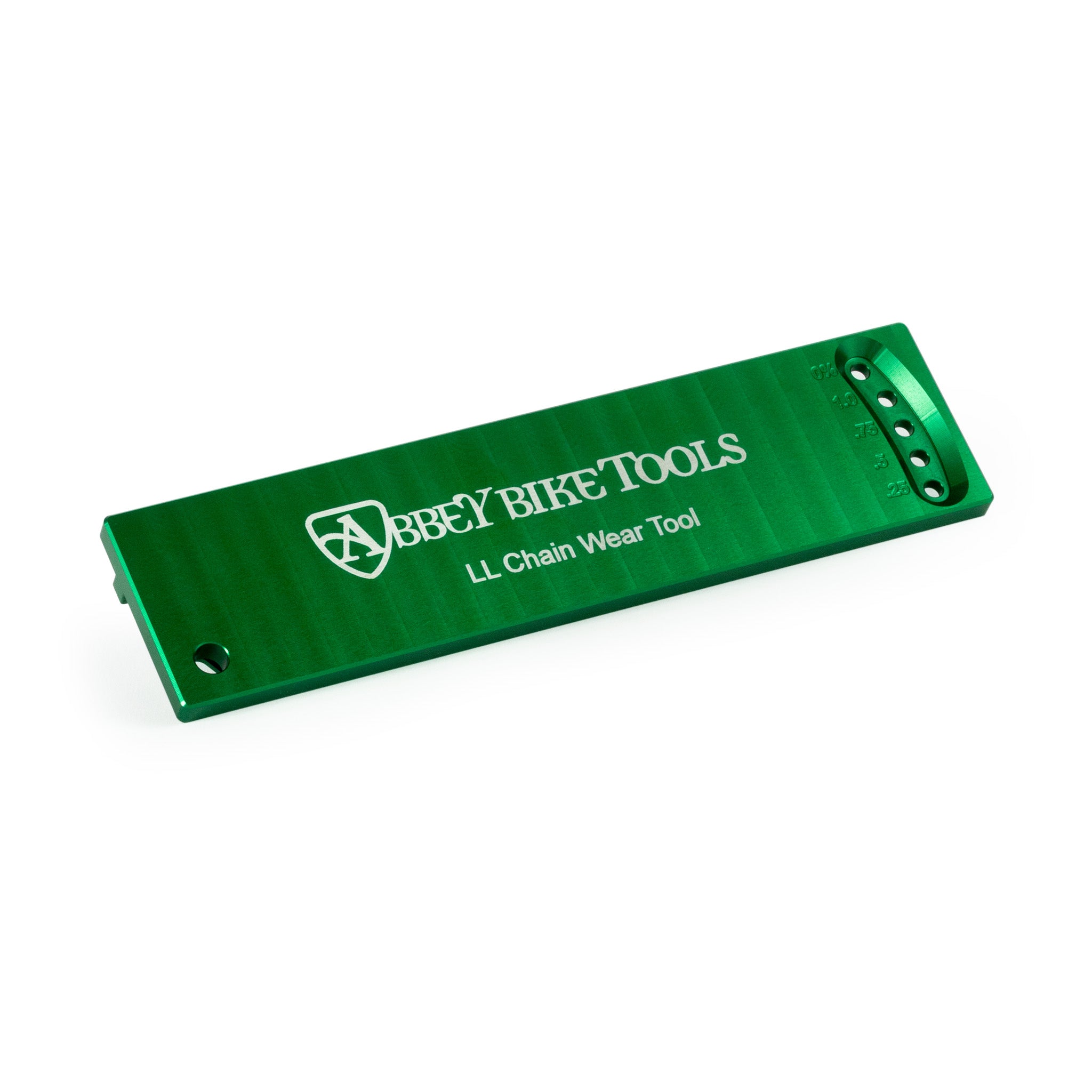
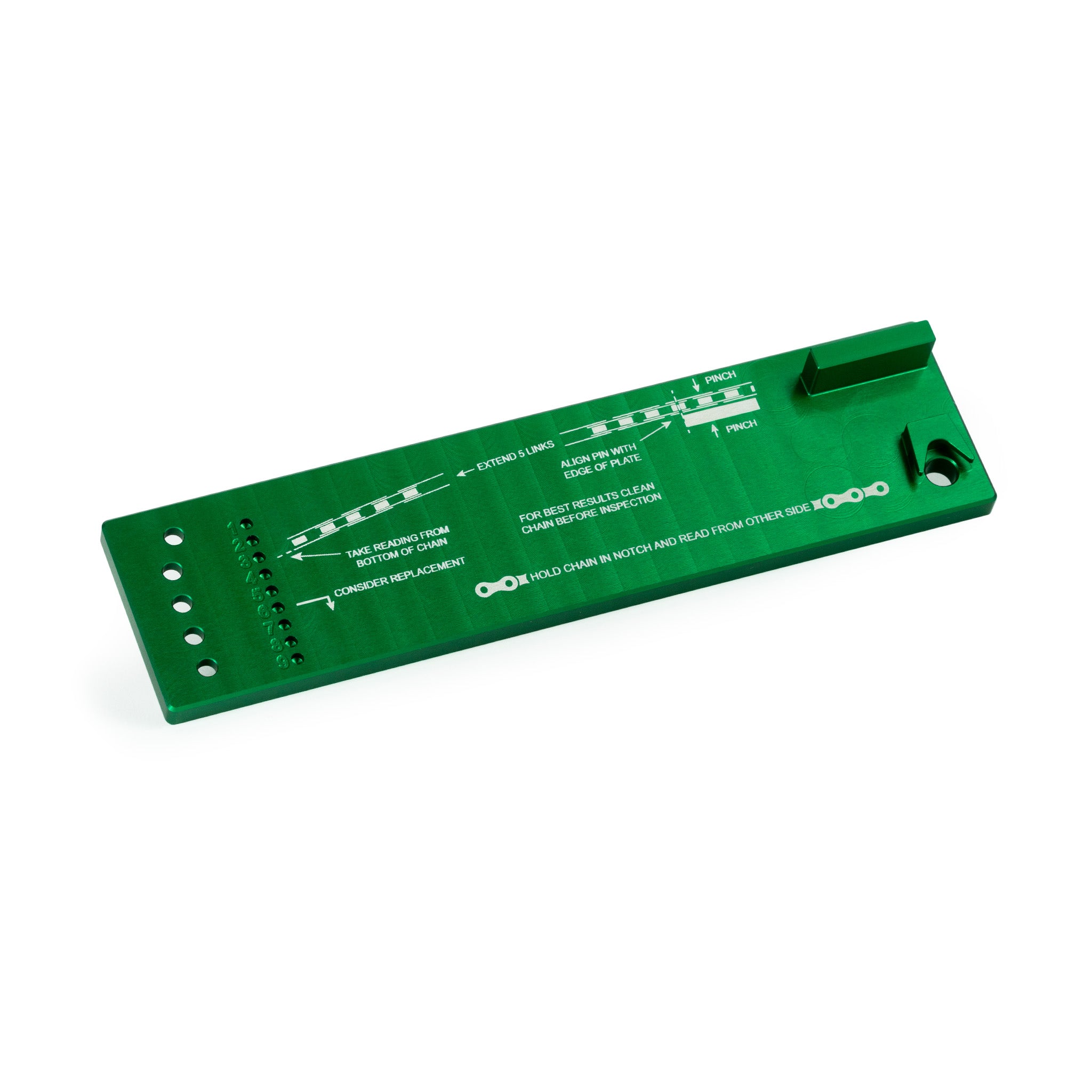
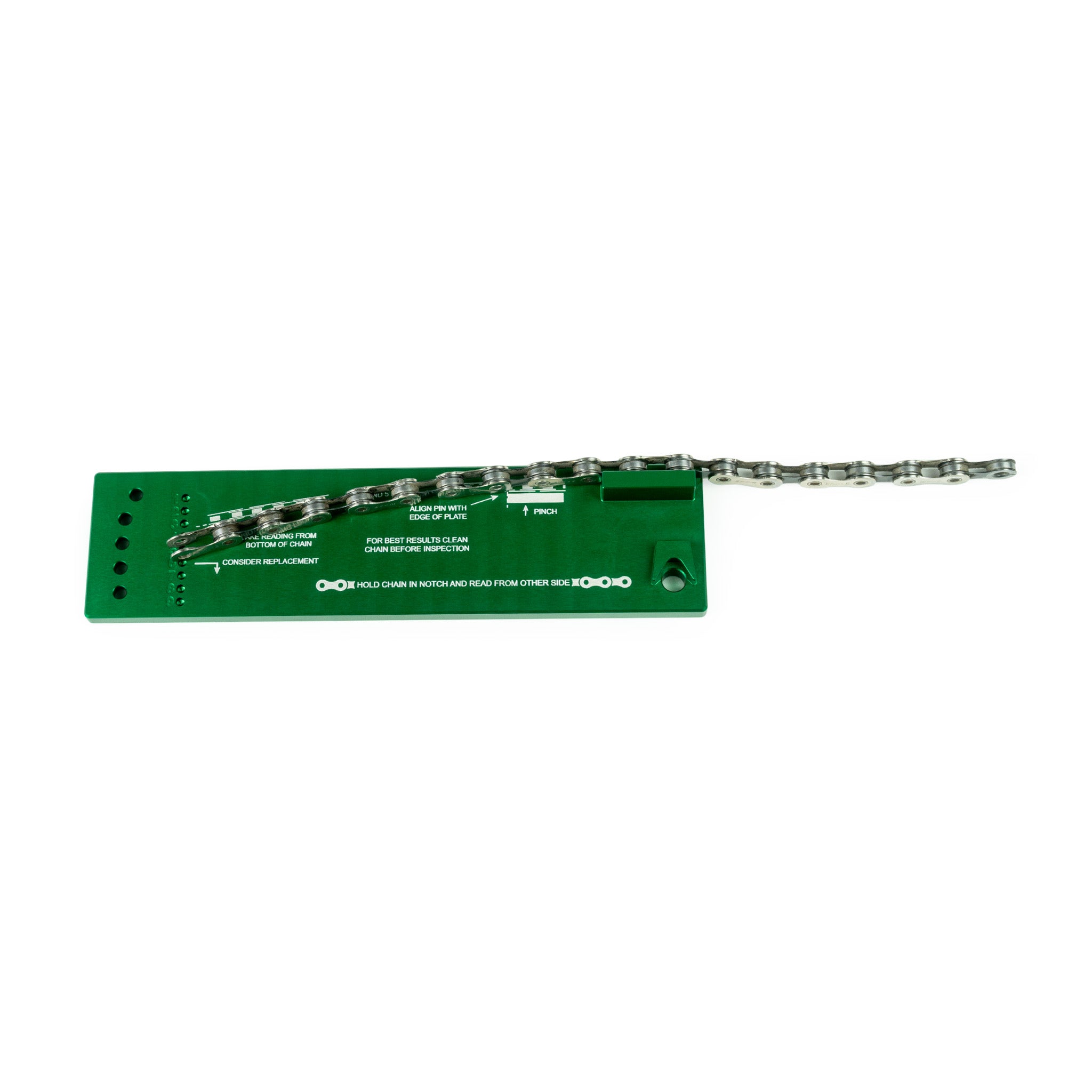
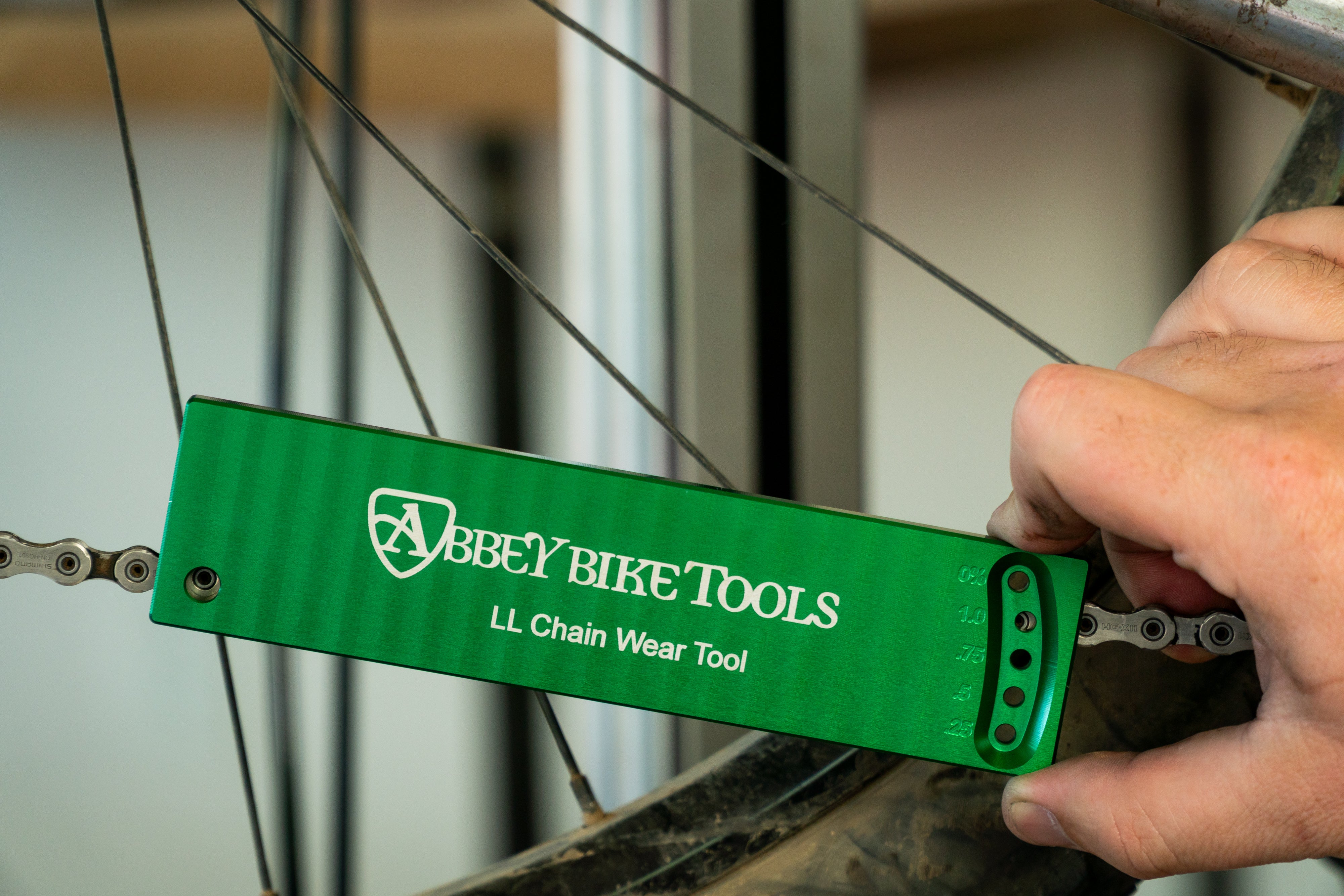
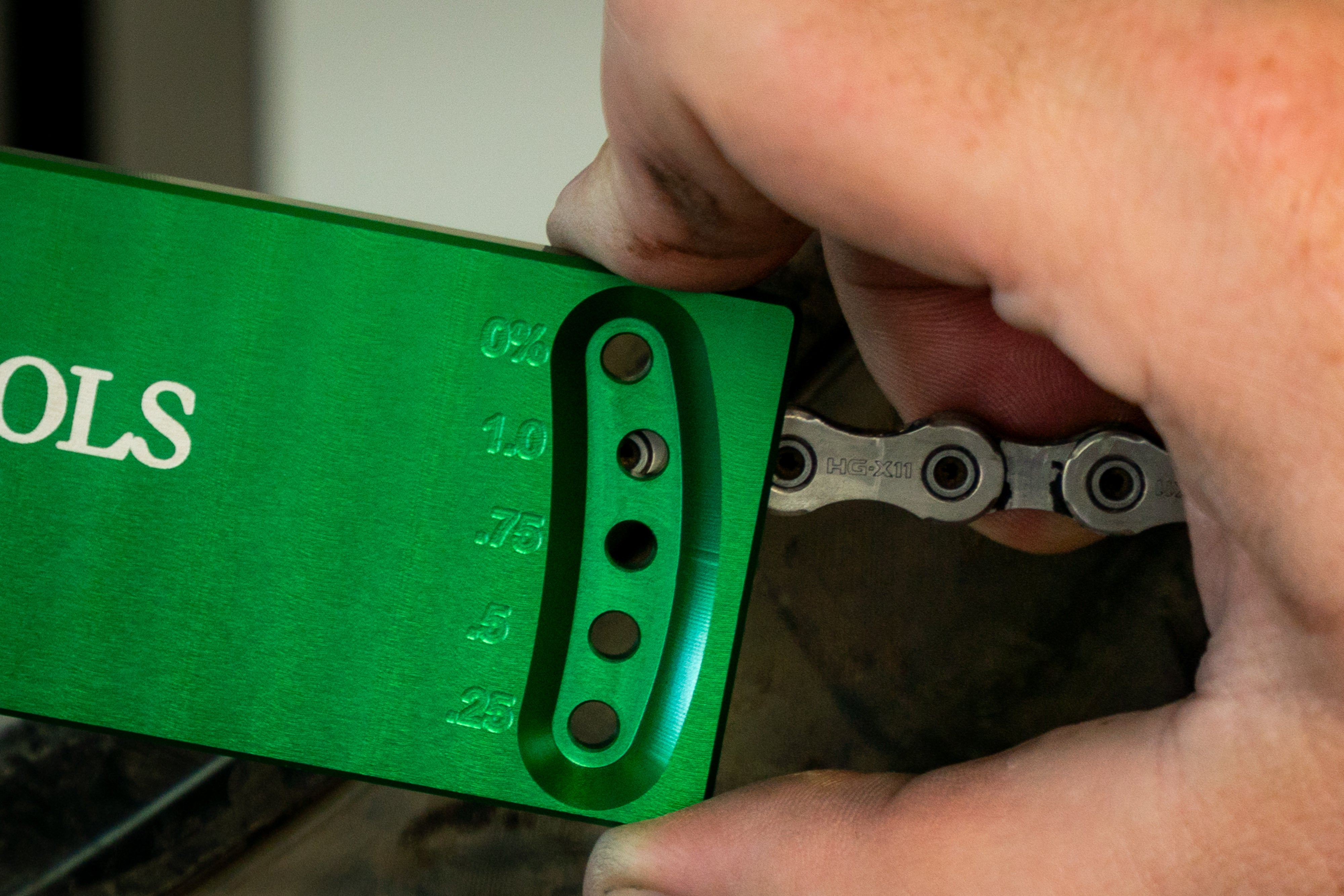
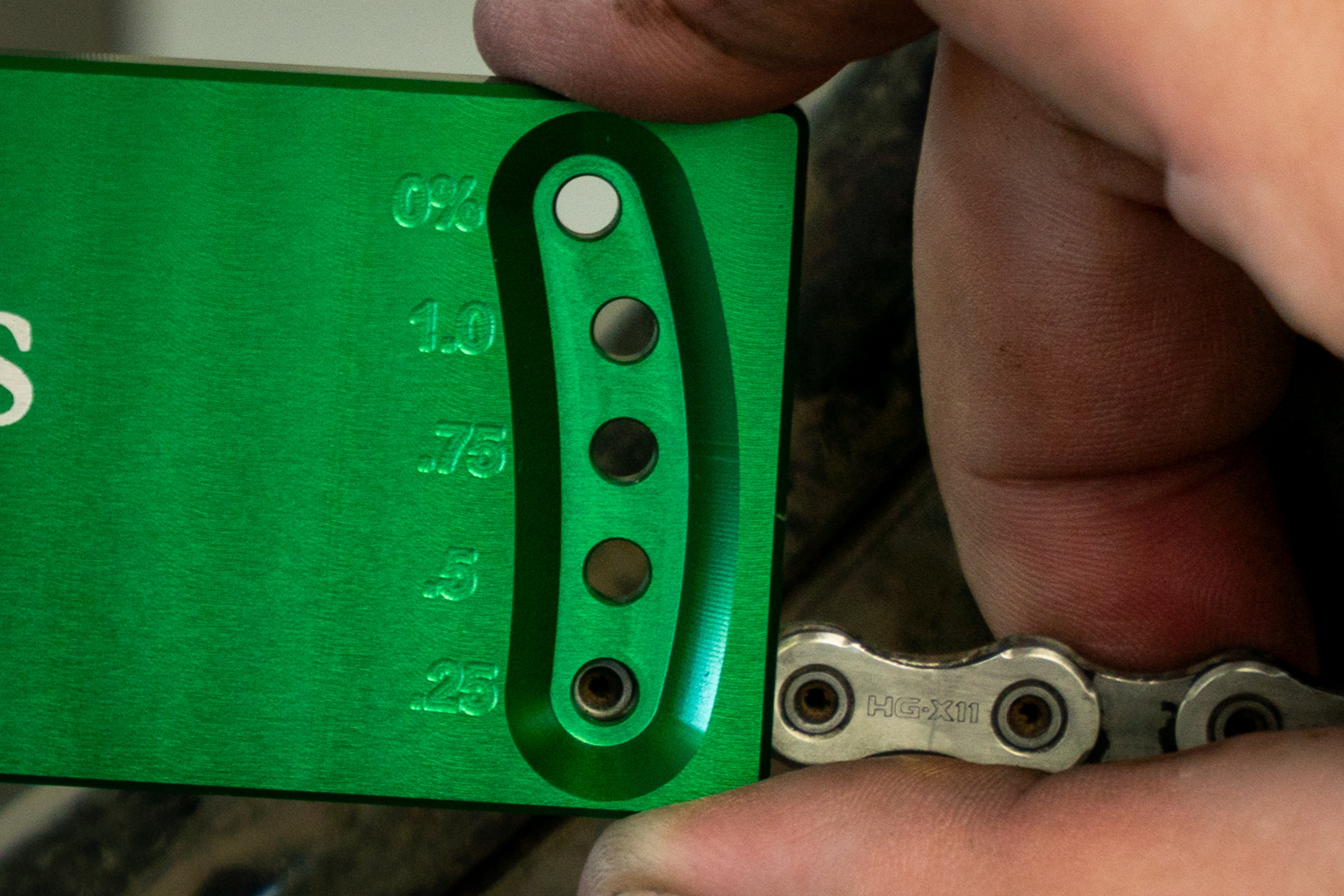
LL Chain Wear Tool
LL Chain Wear Tool
20685 CARMEN LP SUITE 150
20685 Carmen Loop
Suite 150
Bend OR 97702
United States
Choose options
Chain wear has become a little more complicated ever since 1x drivetrains have gained popularity. These drivetrains are designed to cross chain, something most of us were taught to avoid when we started riding bikes as a serious endeavor. Add to that the variables that flat top chains have brought into the market with their larger rollers and things got pretty messy. Problem is, everyone is ignoring these small but significant issues.
What are the issues with measuring chain wear? Well there's a couple of them, the biggest is the diameter difference of SRAM's flat top chains found on most of their modern drivetrains. The rollers on these chains are .010" (.254mm). Now that doesn't sound like a lot but when you do the math to convert that to a percentage of wear over 5 links that's a .2% difference. When we're replacing chains between .5-.7% of wear that .2% can easily be the difference between replacing just a chain and and entire drivetrain. But wait, there's MORE! Most chain wear tools currently on the market are laser cut metal. This is a pretty cool process that's great for making sheet metal parts, problem is the accuracy of this process isn't great at +/-.010" (.254mm). If you add the error of the tool itself to the roller variable it's possible to double the error of the tool.
The Abbey Chain Wear Plate is our latest application of precision to cycling tools. We set out to not only build a tool that handled the variance of roller diameter when measuring chain wear but also measure lateral wear, something nobody's bothered to do, until now. Linear wear or stretch as it's commonly called is measured by locating both sides of the roller in a V shaped notch which allows us to locate the center of the roller accurately regardless of it's size. Then you line up the pin on with one of 5 holes on the opposite end. This also prevents roller wear from influencing the measurement. It's as simple as that.
To measure lateral wear, the chain will need to be off the bike. Then simply pinch the chain against the boss and hold it vertical and see how far it sags. Anything below a 6 isn’t shifting well and a new chain will improve shifting quality.
The other big thing we tackled with this tool is the accuracy of the tool itself. Most chain wear tools on the market are cut with a laser, which is a nice process that we use for parts like our Fit Kit and Stu Stick. However it's not all that accurate with the repeatability of these machines can be around +/-.010. That just isn't good enough for tools of this nature to be frank. We instead made the decision to CNC our tool from a billet to give it the durability and accuracy this tool deserves. Since we actually make these in house we also had complete control over the process and are able to hold tolerances as tight as .0002"(.005mm). Admittedly, that might be a bit overkill for the application but it's not really that difficult to do, if you actually care.
The Double L chain wear tool is patent pending.

